Green Marine Lays Foundation for its New Global Structure

Green Marine International is the newly formed corporation and governance structure overseeing the Green Marine and Green Marine Europe environmental certification programs, the maritime industry’s voluntary initiatives to advance environmental excellence beyond regulations globally.All Green Marine and Green Marine Europe participants are now Green Marine International members. Their respective certification requirements remain unchanged.“It’s truly a momentous time in Green Marine’s history with this unique certification program that started out in the Great Lakes and St.
Season's First 'Saltie' Calls Port of Duluth-Superior
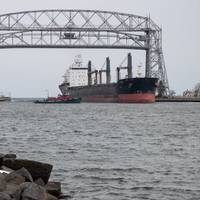
The first "saltie" of the 2024 Great Lakes shipping season entered the Port of Duluth-Superior on Monday,Oceangoing vessels that visit the Great Lakes are called "salties".This year, the first to call the Port of Duluth-Superior is the Portuguese-flagged Barbro G, a 623-foot bulk carrier operated by Sweden’s Brochart KB, which completed the season’s first full transit of the St. Lawrence Seaway en route to the Great Lakes’ westernmost port.By tradition, this first full transit from the Atlantic Ocean marks the annual opening of the Duluth-Superior Harbor…
AAPA Urges Swift Adoption of Stauber Amendment

The American Association of Port Authorities (AAPA) has voiced strong support of Representative Pete Stauber’s (R-Minn.) amendment to the Transportation Housing and Urban Development (THUD) Appropriations bill which, if implemented, would restore funding for the Port Infrastructure Development Program (PIDP).“The Feds have made a serious, laudable, bipartisan down payment on port infrastructure modernization with $1.45 billion awarded through PIDP so far. Don’t stop now, Congress,” said Cary Davis, AAPA President and CEO.
Volumes Rising on Great Lakes–St. Lawrence Seaway System

Shipping across the Great Lakes – St. Lawrence Seaway system topped 4.2 million tons in October, led by strong gains in grain as well as potash, salt and other dry bulk cargos. Overall grain shipments reached 1.5 million tons, a reflection of the strong late harvest in various regions of the Great Lakes.“It’s great to see these positive numbers for the late harvesting of grain in the U.S. and Canada,” said Bruce Burrows, President & CEO of the Chamber of Marine Commerce. “The…
Tindall-Schlicht Named Seaway Administrator

The White House announced President Biden's appointment of former Milwaukee port director, Adam Tindall-Schlicht, as the next Administrator of the Great Lakes St. Lawrence Seaway Development Corporation (GLS). Tindall-Schlicht resigned his position at Port Milwaukee on October 19.An agency of the U.S. Department of Transportation, the GLS is responsible for operation of U.S. portions of the St. Lawrence Seaway. It works in partnership with it's Canadian counterpart to maintain a safe…
US Grain Shipments Through Great Lakes-Seaway Up 39%

U.S. grain shipments via the Great Lakes-Seaway system totaled 312,000 metric tons from March 22 to May 31, up 39% compared to the same period in 2021. Much of the increase is due to exports of corn and soybeans out of the Port of Toledo and some new trade starting at the port of Oswego this shipping season. The rise in shipments, which are predominantly heading to Europe and North Africa, are in part due to shifting global grain trading patterns as the conflict between Russia and the Ukraine — both major grain exporters — continues.“The Great Lakes-St.
Lack of Icebreaking Hampers Great Lakes Shipping
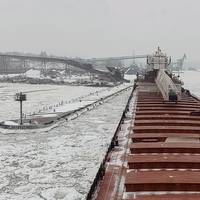
A lack of Coast Guard icebreaking assets is hampering U.S.-flag shipping on the Great Lakes, according to industry coalition the Great Lakes Maritime Task Force.“The inefficiency introduced into the Great Lakes Navigation System by inadequate Coast Guard icebreaking resources impacts the carriers, their customers and the entire North American Manufacturing supply chain,” said Jim Weakley, President of Great Lakes Maritime Task Force, and the Lake Carriers’ Association. “The men and women of the U.S. Coast Guard do the best they can with the resources they are provided.
House Transportation Committee Funds Key Great Lakes Projects
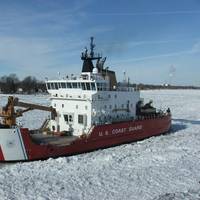
The House Transportation and Infrastructure Committee on Tuesday approved $1 billion for U.S. Coast Guard shore side infrastructure nationwide and $350 million for a heavy Great Lakes icebreaker as part of its budget reconciliation bill, an action that the Great Lake Maritime Task Force (GLMTF) called “great news for the Great Lakes.”The GLMTF described the heavy Great Lakes icebreaker as desperately needed and expects that a portion of the infrastructure funds will go to good…
Great Lakes-St. Lawrence Seaway System Sees Surge in Construction Material Shipments
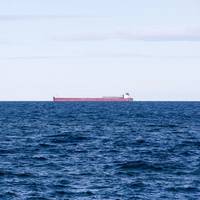
U.S. Great Lakes ports and the St. Lawrence Seaway have experienced a rise in cargo shipments to feed domestic construction and manufacturing activity and global export demand, according to the latest June figures.The Great Lakes-Seaway System serves a region that includes eight U.S. states and two Canadian provinces, and is seen as a marine highway that extends 2,300 miles from the Atlantic Ocean to the Great Lakes, supporting more than 237,868 jobs and $35 billion in economic activity.If the region were a country…
Study Will Examine Effects of Reduced Ice Coverage on Great Lakes Shipping
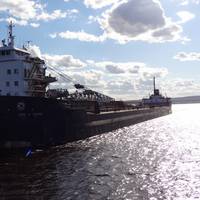
A preponderance of climate studies on the Great Lakes predict a trend toward reduced ice cover. Ice is expected to form later and melt earlier. With Wisconsin Sea Grant funding, researchers at the University of Wisconsin-Superior (UWS) are looking into how this might impact the shipping industry on the Great Lakes.Richard Stewart, director of the Transportation and Logistics Research Center at UWS, is undertaking the yearlong study with Daniel Rust, UWS assistant professor of transportation and logistics.
Duluth Seaway Port Authority Acquires Duluth Lake Port dock

The Duluth Seaway Port Authority last week finalized acquisition of the Duluth Lake Port dock on Rice’s Point.Located immediately northwest of the Port Authority’s First Clure Terminal Expansion, but separated from it by the Azcon Metals recycling property, the 7.5-acre Duluth Lake Port dock and 3.5-acre slip date back to the 1880s, when Duluth Imperial Mill built the site’s initial flour mill and grain elevators. The facility was last used for grain in 2015. TN LLC purchased the site in 2017. The Port Authority acquired it from TN LLC in a $950,000 deal that closed Dec. 1, 2020.
New Legislation Aims to Boost Great Lakes Icebreaking Capacity
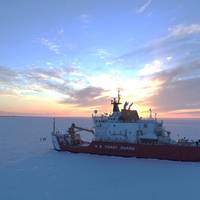
New legislation introduced by U.S. Senators Tammy Baldwin (D-Wis.), Todd Young (R-Ind.) and Gary Peters (D-Mich.) will codify the U.S. Coast Guard’s icebreaking mission on the Great Lakes and increase the icebreaking capacity of the Great Lakes fleet.The Great Lakes Winter Commerce Act aims to increase Great lakes icebreaking capacity, which the lawmakers say will help the businesses and workers that rely on the maritime industry to transport their goods to market and grow the regional economy.“In recent years…
US Great Lakes Ports See Mixed Impacts from COVID-19
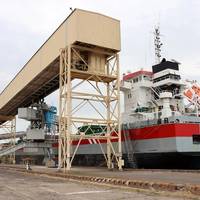
U.S. Great Lakes ports reported mixed results in June with aluminum, road salt and grain shipments holding strong despite the coronavirus pandemic, while shipments of commodities related to steel production and manufacturing have continued to slide.Additionally, the St. Lawrence Seaway reported that from April 1 to June 30, nearly 11.7 million metric tons of cargo was shipped via the bi-national trade corridor. While these volumes were down 8% compared to the same time period in 2019, cargo shipments improved in June narrowing the year-over-year decline.Craig H.
COVID-19 Weighs on Great Lakes-Seaway Shipping
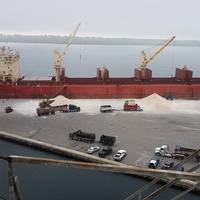
While St. Lawrence Seaway cargo volumes decreased during the past two months due to economic shifts related to COVID-19, industry leaders said the binational trade and transportation corridor is ready to play its part in the economic recovery efforts in the coming months. Meanwhile, with an increased focus on commodity diversification through project cargo, international shipments of wind energy components in the Great Lakes region are taking off.Overall St. Lawrence Seaway tonnage from March 15 through May 31 totaled 7.7 million metric tons, down 10% compared to the same time period in 2019.
Duluth Seaway Port Authority Officers Elected
During its annual meeting held March 25, the Duluth Seaway Port Authority Board of Commissioners elected officers for the fiscal year beginning April 1, 2020.The board re-elected Rick Revoir to serve his second year as president. Other appointments included Tony Sertich as vice president, Patrick Boyle as secretary, Norm Voorhees as treasurer and Mike Jugovich as assistant treasurer. Together with fellow board members Ray Klosowski and Yvonne Prettner Solon, this septet oversees the Port Authority’s financial and organizational affairs.The Duluth Seaway Port Authority is governed by a seven-member board – two commissioners appointed by the state’s governor, two by the St. Louis County board, and three by the Duluth City Council.
2019 Shipping Season Opens at St. Lawrence Seaway
As the St. Lawrence Seaway officially opened for business yesterday (March 26), U.S. Great Lakes ports are predicting the shipping season will mirror last year’s stellar performance.In 2018, many U.S. Great Lakes ports recorded their highest cargo totals in recent years, with strong volumes of iron ore, petroleum products, construction products and international grain exports. This coming season, road salt shipments should also be strong as cities replenish their reserves after a long, difficult winter. “We are optimistic these trends will continue into the new season and off-season investments made by the St. Lawrence Seaway and local ports will make 2019 another great season for our members,” says Bruce Burrows, President of the Chamber of Marine Commerce.
Ports of Indiana: Big Successes, with Big Projects in the Wings

For Indiana’s state-established, but autonomous Ports of Indiana, 2018 was a record setting year, both for system-wide numbers and among the three individual Ports. These consist of Burns Harbor, on Lake Erie; Jeffersonville, on the Ohio, across from Louisville, KY; and Mount Vernon, also on the Ohio River, about 140 miles downriver from Jeffersonville.Not only were actual numbers robust, but Port officials reported “unprecedented tonnage increases” within the three-port system.
Strong July Across Great Lakes Gets Seaway Tonnage
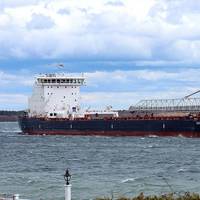
Great Lakes-St. Lawrence shipping continues to bounce back after a slow start. With strong tonnage numbers in July, particularly shipments of U.S. grain, liquid bulk and project cargo, the 2018 shipping season is right on par with the healthy statistics posted last year.Overall cargo shipments on the St. Lawrence Seaway between March 29 and July 31 totaled 16.5 million metric tons. Areas of strength included U.S. grain shipments totaling 888,000 metric tons, up 32 percent over last year. Liquid bulk shipments totaled 2.3 million metric tons, an increase of 25 percent.
Season’s First Saltie Heads for Duluth-Superior
The first ‘saltie’ of the 2018 commercial navigation season is on its way to the Port of Duluth-Superior. The 656-foot bulk carrier Federal Weser is scheduled to pass beneath Duluth’s Aerial Lift Bridge by 10 p.m. tonight and is expected to start loading Monday morning at the CHS terminal on the Superior side of the harbor. If all goes according to plan, the ship should depart late Tuesday or Wednesday with 21,400 metric tons of durum wheat bound for Algeria. The Federal Weser, part of the Fednav fleet, last visited the Twin Ports in 2015. This year, the Marshall-Islands-flagged bulker stopped on its way to Duluth-Superior to deliver a load of steel in Sault Ste. Marie, Ontario. The vessel has 22 crew members on board and is under the command of Captain Umesh C. Sharma.
US Iron Ore Shipments Remain Strong
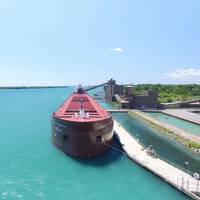
Iron ore, dry bulk cargo and general cargo shipments remain strong on the St. Lawrence Seaway, with overall tonnage up 18 percent over last year. The St. Lawrence Seaway Management Corporation reports that cargo shipments from March 20 through July 31 totaled more than 16 million metric tons – up 2.5 million metric tons over the same period in 2016. “We continue to see demand for raw materials that are needed for construction and in the manufacturing and automotive industries,” said Bruce Burrows, President of the Chamber of Marine Commerce.
St. Lawrence Seaway Expecting a Strong Finish

A strong finish to the St. Lawrence Seaway’s 2016 shipping season is expected as freighters deliver raw materials and exports for North America’s industrial and agricultural sectors before the waterway closes December 31. "The St. Lawrence Seaway has been a significant export gateway for American grain and iron ore pellets this season and that’s expected to continue in these final weeks of December,” said Bruce R. Burrows, the new president of the Chamber of Marine Commerce. “High…
Traditional, Project Cargoes Transit St. Lawrence Seaway in November

“November was a good month for the export of agricultural products and shipments of aluminum ingots on the Great Lakes Seaway System,” said Betty Sutton, Administrator of the U.S. Saint Lawrence Seaway Development Corporation. “Under the binational trade development program known as ‘Highway H2O’, the U.S. Sutton added, “The U.S. Great Lakes ports of Toledo, Ohio; Duluth, Minn.; Burns Harbor, Ind.; and Milwaukee, Wis. handled corn, soybeans and wheat exports bound for Europe, South America, and Central America.
Grain and Project Cargo Dominate St. Lawrence Seaway Traffic in October

“The Great Lakes St. Lawrence Seaway System saw a steady flow of traditional cargoes during the month of October,” said Betty Sutton, Administrator of the Saint Lawrence Seaway Development Corporation. “Last month, shipments of aluminum, steel, generators, crane components, iron ore and containerized goods moved in the system. Thanks to a robust U.S and Canadian grain crop, agricultural products including corn, soy beans, wheat and sugar beet pellets made up the majority of the…








